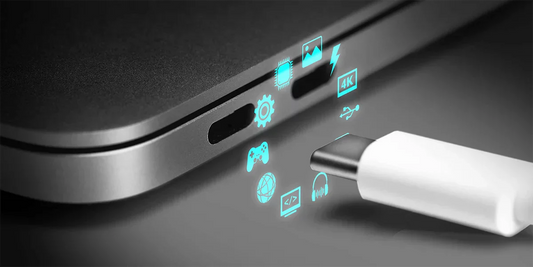Can HDMI Power a Portable Monitor?
Teilen Sie
In the era of digital nomads, hybrid work, and mobile gaming, portable monitors have become essential tools. Whether you're extending your laptop screen or hooking up your Nintendo Switch, one common question arises: Can HDMI power a portable monitor?
Let’s dive into the technical details, explore your options, and share practical setups that actually work in 2025.

Can HDMI Power a Portable Monitor?
In most cases, the answer is NO. While HDMI carries video and audio signals, it does not provide enough electrical power to turn on or run a portable monitor. Most portable monitors need around 5V/2A or higher, which HDMI ports on laptops or game consoles cannot deliver.
What is HDMI?
HDMI stands for High-Definition Multimedia Interface. It’s a widely used standard for transmitting:
- High-quality video
- Digital audio
But here's the catch: HDMI is not designed to deliver power.
It was never intended to function like USB ports or chargers. That’s why most HDMI connections cannot power external monitors—especially high-resolution portable ones.
When Do I Need HDMI?
HDMI still plays an important role when:
- Your laptop doesn’t support USB-C video output
- You want to connect to game consoles
- You use older devices or desktop PCs
Typical Setup of Portable Monitor: HDMI + USB Power
If your portable monitor has an HDMI input (such as mini HDMI or micro HDMI), it will almost certainly require a second cable for power. A common dual-cable setup looks like this:
| Cable Type | Purpose |
|---|---|
| HDMI to HDMI | Transmits video/audio |
| USB-A to USB-C (or Micro-USB) | Provides power (from laptop, wall adapter, or power bank) |
This two-cable system is especially common with gaming setups like:
- PlayStation 5 + Portable Monitor
- Nintendo Switch + Portable Monitor
- Mini PC + Monitor for travel
What’s the Alternative to HDMI Portable Monitors?
Unlike HDMI, which only transmits video and audio, USB-C with DisplayPort Alt Mode and Power Delivery offers a more advanced and streamlined solution—it can handle video, audio, and power through a single cable.
This means fewer adapters, less cable clutter, and a cleaner, more efficient setup. For users who prioritize portability, simplicity, and compatibility with modern devices, USB-C portable monitors are undoubtedly the smarter choice in 2025—especially for laptops, tablets, and newer smartphones that support USB-C output.
Recommended USB-C Portable Monitor (No HDMI Required)
If you want a one-cable solution, consider a 16-inch Full HD portable monitor that features USB-C input with DisplayPort and Power Delivery. These displays are perfect for:
- Working on the go
- Streaming or gaming via a single USB-C connection
- Reducing cable clutter
Look for options that offer:
- 16” IPS Full HD screen
- USB-C single cable input (supports power + video)
- Ultra-lightweight (around 1.7 lbs)
- Built-in speakers and adjustable stand
- Compatibility with laptops, phones, consoles.
Explore More Portable Monitors
- Best value 15.6" FHD portable monitor
- The best 16'' monitor for gaming
- Best 15.6'' 4K Portable Monitors for Professionals
- Best 14.1'' Dual Portable Monitors for Enhanced Productivity
- Best 15.6'' Portable Monitors with Touchscreen Functionality








